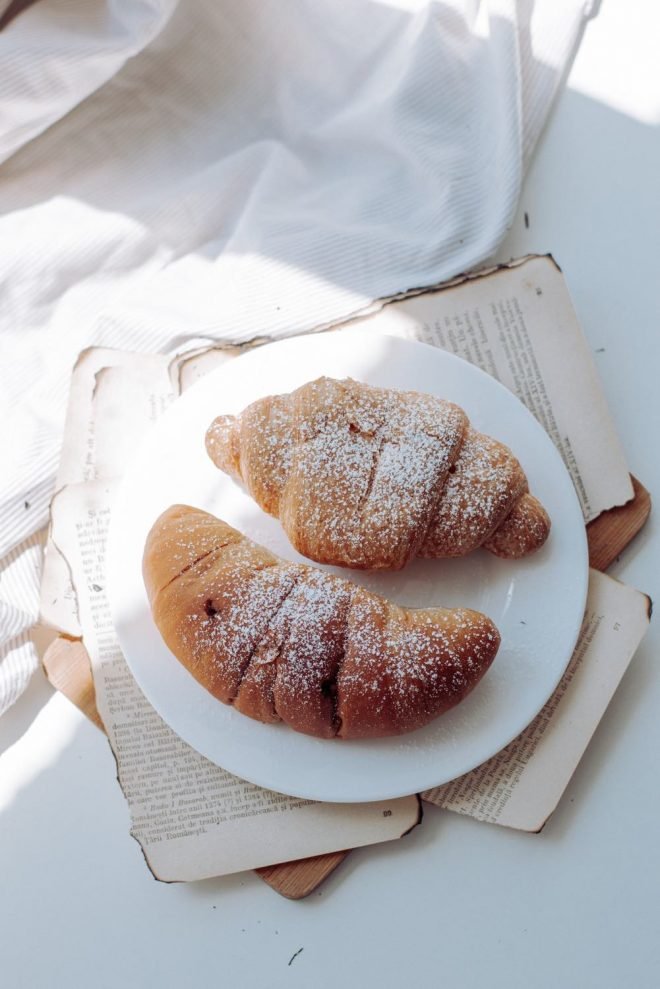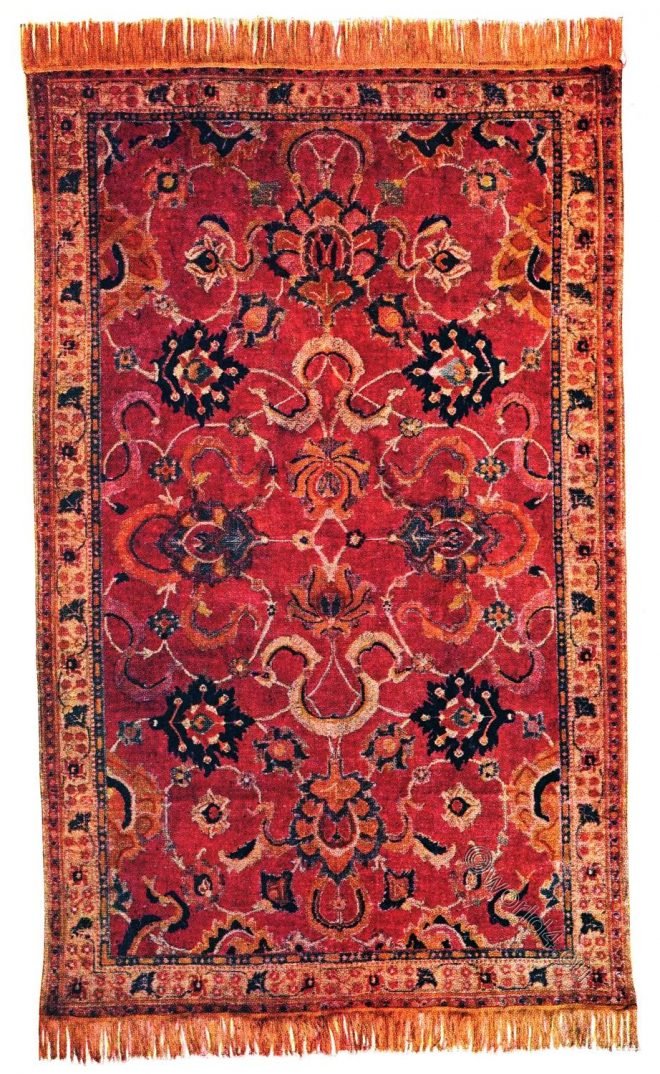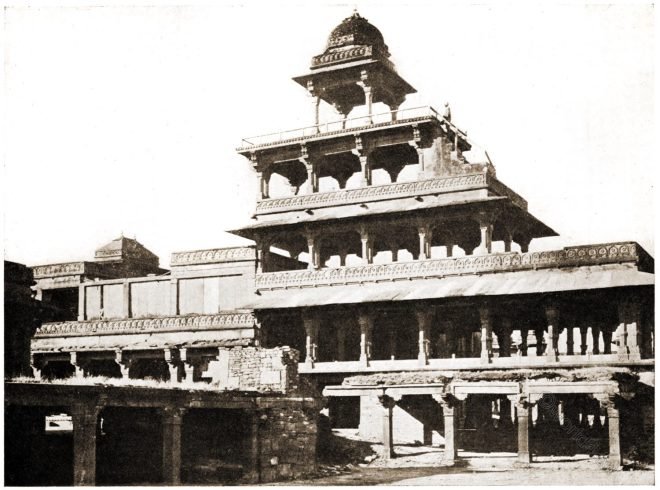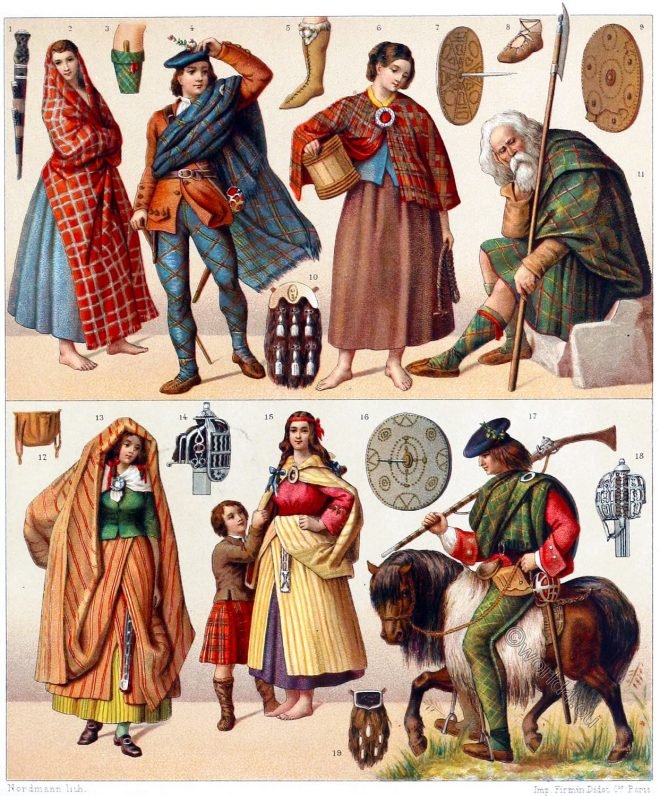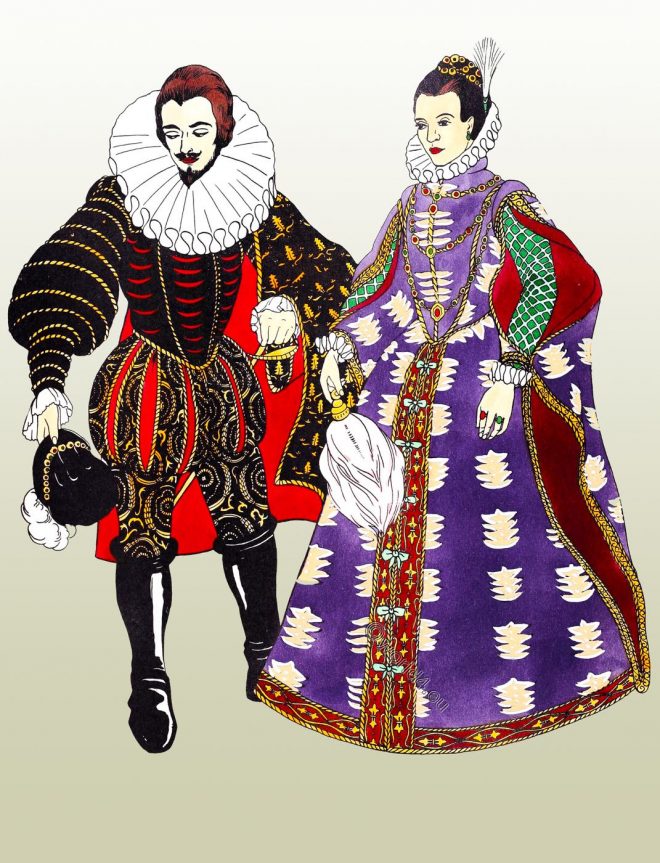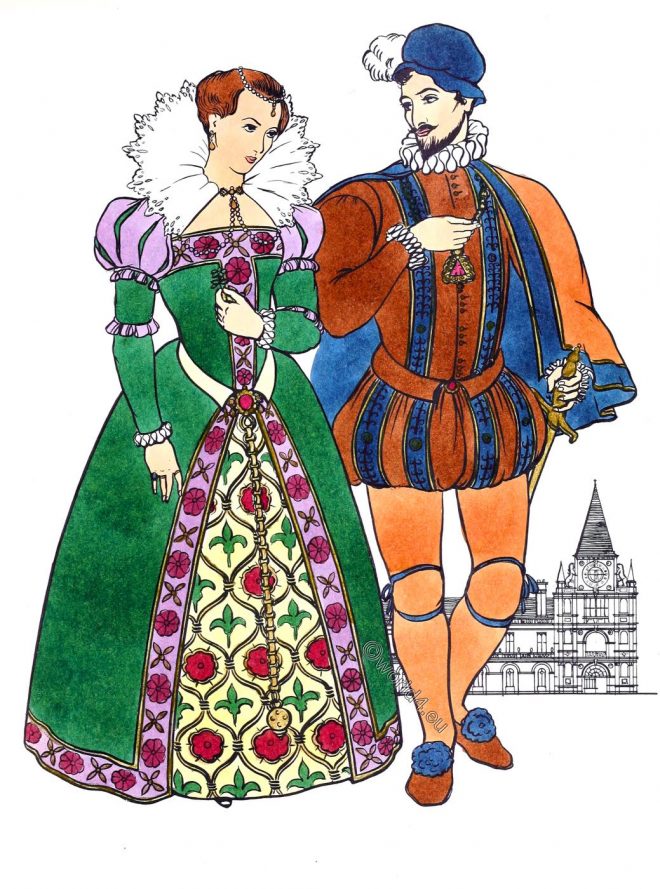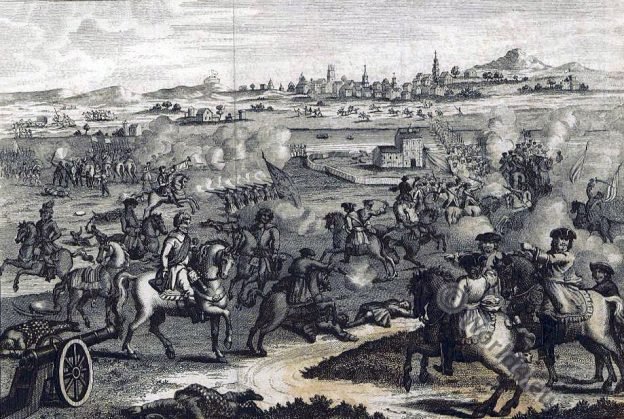When Marie Antoinette married Louis XVI of France, she missed her Kipfel, and sent to Vienna for an Austrian baker to teach his Paris confreres the art of making them.
Category: 17th Century
Indo-Persian Rug of the Ballard Collection. India 17th century.
Indo-Persian Rug of the catalogue of oriental rugs in the collection of James Franklin Ballard.
Historical tools of corporal punishment of earlier centuries.
Instruments of torture. Shame mask, thief catcher, thumbscrews, iron collar, branding iron. Middle Ages and modern times.
Fatehpur Sikri. The former capital of the Mughal Empire.
Fatehpur Sikri, the “City of Victory”, was the name given by the Great Mogul to the ensemble. The former capital of the Mughal Empire under Great Mughal Akbar I. (1542-1605) was built between 1569 and 1574.
Scotland. Costumes of the mountain dwellers. The woman.
The Clan of the Mac-Nicols, Sinclai, Colqhon, Farquharson, Urqhart, Mathesons, Mac-Niels, Clan Mac-Ivor, Chisholm, Mac-Lean, Clar-Innis
Transitional Female costume. Elizabethan fashion 1550 to 1620.
Transitional Female costume between the Elizabethan and Charles I modes. Elizabethan fashion 1550 to 1620.
An Elizabethan man’s outfit. Woman wearing a Spanish farthingale.
The man and woman shown here are wearing typical ensembles of the Elizabethan era. The man is somewhat of a dandy. The woman is wearing a Spanish farthingale.
Feminine Elizabethan ensemble of the 16th c. England Tudor era.
The woman shown here might very well be the Queen herself.
Typical and splendid examples of Elizabethan clothing.
The Elizabethan era is probably regarded by many as the most dramatic and colorful period in the history of western dress.
The escape of Charles II after the Battle of Worcester, 1651.
King Charles II escaped, and now entered upon a scene of adventures the most romantic that can be imagined.

